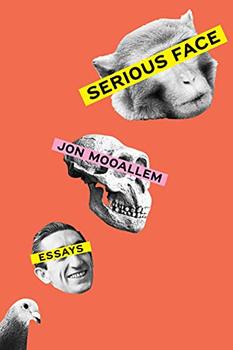Summary | Excerpt | Reviews | Beyond the Book | Readalikes | Genres & Themes | Author Bio

 Book Reviewed by:
Book Reviewed by:
Erin Lyndal Martin
Buy This Book
First, there was the discipline's implicit conviction that every work is shaped by the viewer's perspective. He remembers looking at slides of ancient sculptures in a dark lecture hall, all of them missing arms or noses or ears, and suddenly recognizing them for what they were: fellow amputees. "We were, as a class, all calling these works monumental, beautiful, and important, but we'd never seen them whole," he says. Time's effect on these marble bodies—their suffering, really—was understood as part of the art. Medicine didn't think about bodies this way, Miller realized. Embedded in words like "disability" and "rehabilitation" was a less generous view: "There was an aberrant moment in your life and, with some help, you could get back to what you were, or approximate it." So, instead of regarding his injuries as something to get over, Miller tried to get into them, to see his new life as its own novel challenge, like traveling through a country whose language he didn't speak.
This positivity was still mostly aspirational. Miller spent years repulsed by the "chopped meat" where his arm ended and crushed with shame when he noticed people wince or look away. But he slowly became more confident and playful. He replaced the sock-like covering many amputees wear over their arm stumps with an actual sock: first a plain sock, then stripes and argyles. Then, one day he forgot to put on any sock and—just like that—"I was done with it. I was no longer ashamed of my arm." He became fascinated by architects who stripped the veneer off their buildings and let the strength of their construction shine through. And suddenly, the standard-issue foam covers he'd been wearing over his prosthetics seemed like a clunky charade—Potemkin legs. The exquisitely engineered artificial limbs they hid were actually pretty interesting, even sexy, made of the same carbon fiber used as a finish on expensive sports cars. Why not tear that stuff off and delight in what actually is? Miller recalled thinking. So he did.
For years Miller collected small, half-formed insights like these. Then he entered medical school and discovered palliative care, an approach to medicine rooted in similar ideas. He now talks about his recovery as a creative act, "a transformation," and argues that all suffering offers the same opportunity, even at the end of life, which gradually became his professional focus. "Parts of me died early on," he said recently. "And that's something, one way or another, we can all say. I got to redesign my life around this fact, and I tell you it has been a liberation to realize you can always find a shock of beauty or meaning in what life you have left."
One morning in July 2015, Miller took his seat at a regular meeting of palliative-care doctors at the University of California San Francisco's cancer center. The head of the team, Dr. Michael Rabow, started with a poem. It was a tradition, he later told me, meant to remind everyone that this was a different sort of hour in their schedule, and that, as palliative-care physicians, they were seeking different varieties of outcomes for their patients: things like comfort, beauty, and meaning. The poem was called "Sinkhole," and it seemed to offer some sneaky, syntactically muddled wisdom about letting go. When it was over, there was a beat of silence. (It was sort of a confusing poem.) Then Rabow encouraged everyone to talk about any patients who had died since their last meeting. Miller was the first to speak up.
Miller, now forty-five years old, with deep brown eyes and a scruffy, silver-threaded beard, saw patients one day a week at the hospital. He was also entering his fifth year as executive director of a small, pioneering hospice called the Zen Hospice Project, which originated as a kind of compassionate improvisation at the height of the AIDS crisis, when members of the San Francisco Zen Center began taking in sick, often stigmatized young men and doing what they could to help them die comfortably. The hospice is now an independent nonprofit group that trains volunteers for San Francisco's Laguna Honda public hospital as well as for its own revered, small-scale residential operation. (Two of the facility's six beds are reserved for UCSF, which sends patients there; the rest are funded through sliding-scale fees and private donations.) Once an outlier, Zen Hospice had come to embody a growing nationwide effort to reclaim the end of life as a human experience instead of primarily a medical one. The goal, as Miller likes to put it, is to "de-pathologize death."
Excerpted from Serious Face by Jon Mooallem. Copyright © 2022 by Jon Mooallem. Excerpted by permission of Random House. All rights reserved. No part of this excerpt may be reproduced or reprinted without permission in writing from the publisher.





The House on Biscayne Bay
by Chanel Cleeton
As death stalks a gothic mansion in Miami, the lives of two women intertwine as the past and present collide.

The Flower Sisters
by Michelle Collins Anderson
From the new Fannie Flagg of the Ozarks, a richly-woven story of family, forgiveness, and reinvention.

The Funeral Cryer by Wenyan Lu
Debut novelist Wenyan Lu brings us this witty yet profound story about one woman's midlife reawakening in contemporary rural China.
Your guide toexceptional books
BookBrowse seeks out and recommends the best in contemporary fiction and nonfiction—books that not only engage and entertain but also deepen our understanding of ourselves and the world around us.